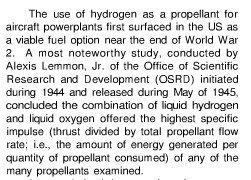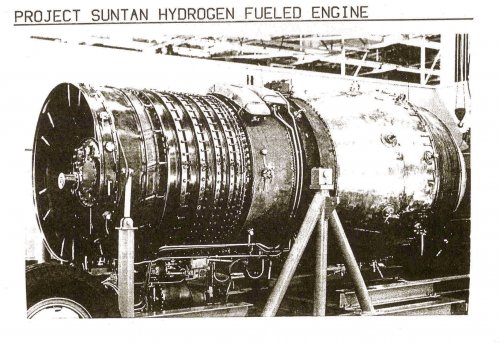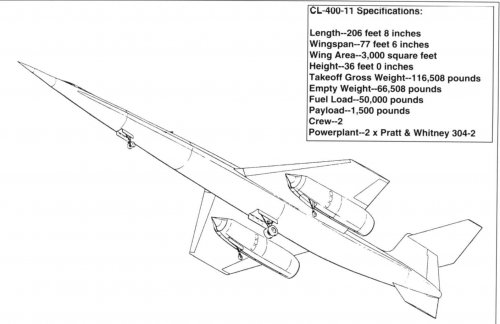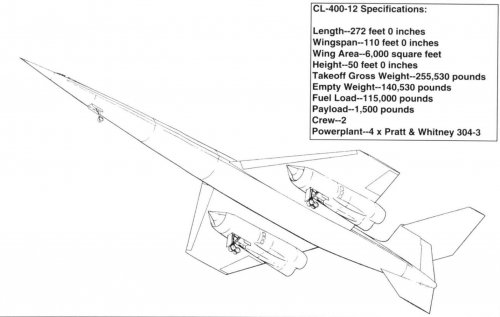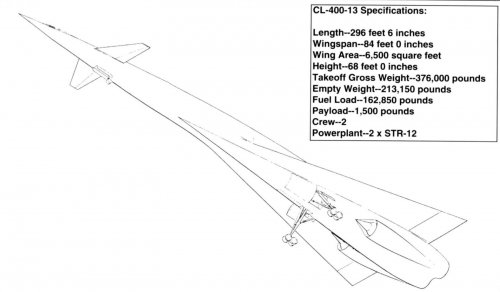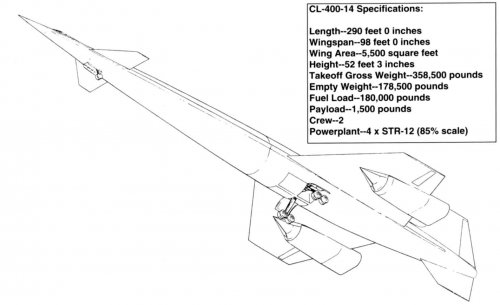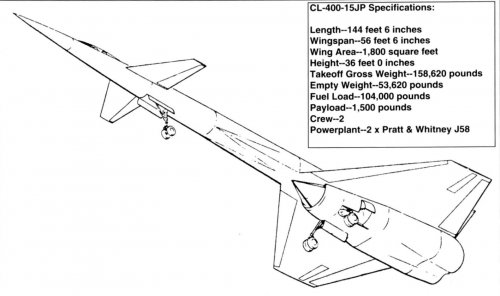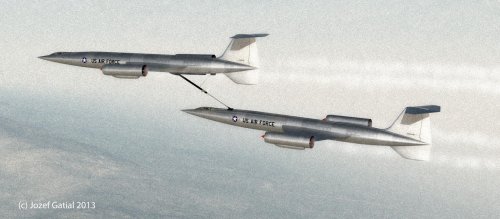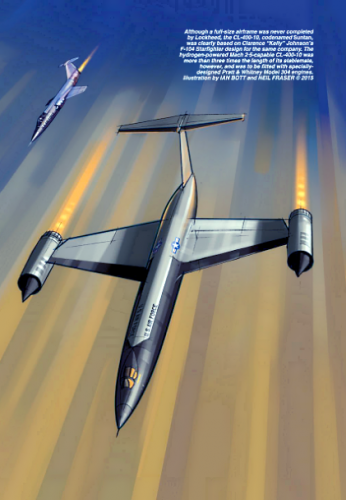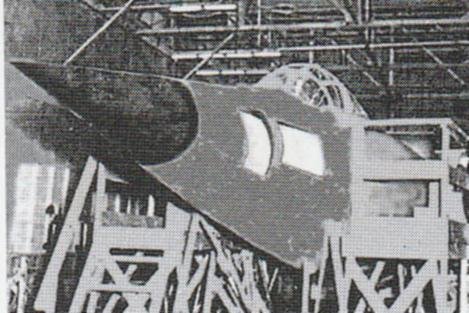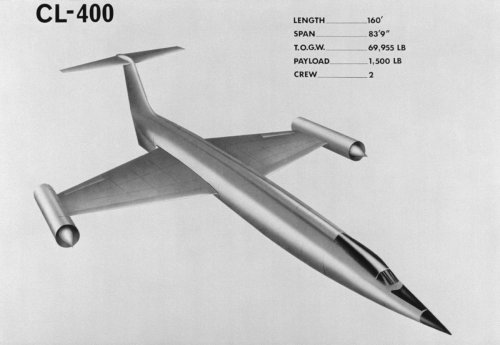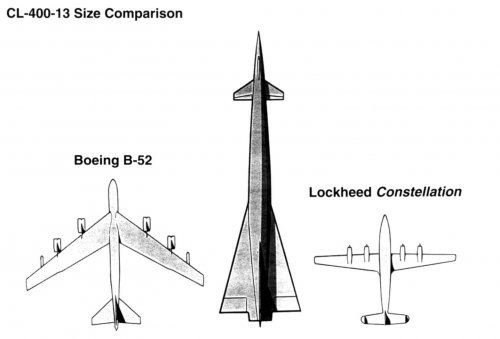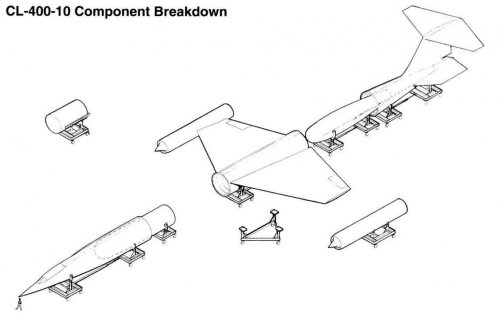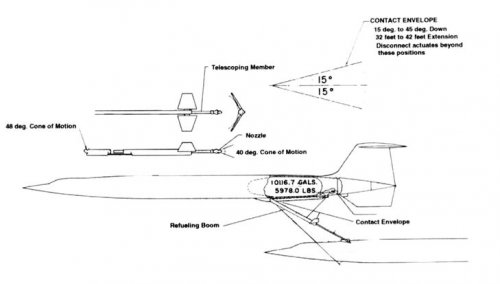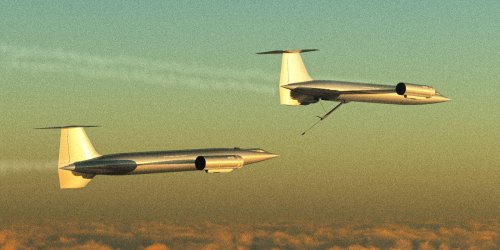My biggest question regarding the Lockheed Suntan program is why they bothered investigating hydrogen turbojets in the first place. The best advantage I can think of was the ability to achieve the desired speed and range with an airframe that was much lighter than anything else in its size class (TOGW was less than half of the SR-71, and even 13,000# less than the much smaller F-111!) But from a development standpoint it made sense to investigate conventional turbojets, and the Blackbird series was the correct answer.
Still, Project Apollo, the space shuttle, Atlas and Delta owe much to the hydrogen breakthroughs that were initially made on Suntan. In that regard, the effort was a shining success.
Still, Project Apollo, the space shuttle, Atlas and Delta owe much to the hydrogen breakthroughs that were initially made on Suntan. In that regard, the effort was a shining success.

